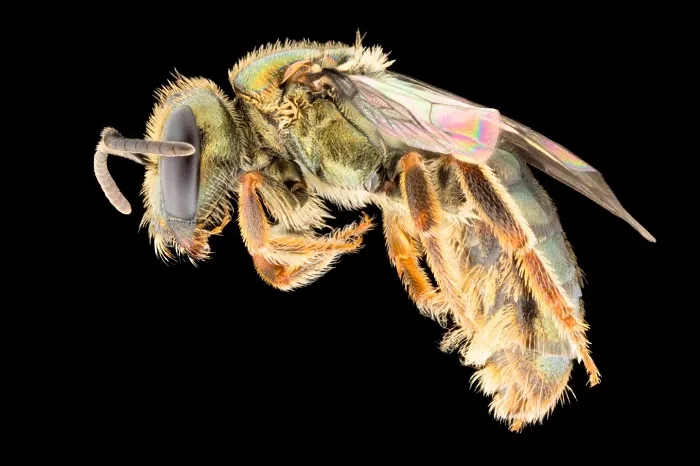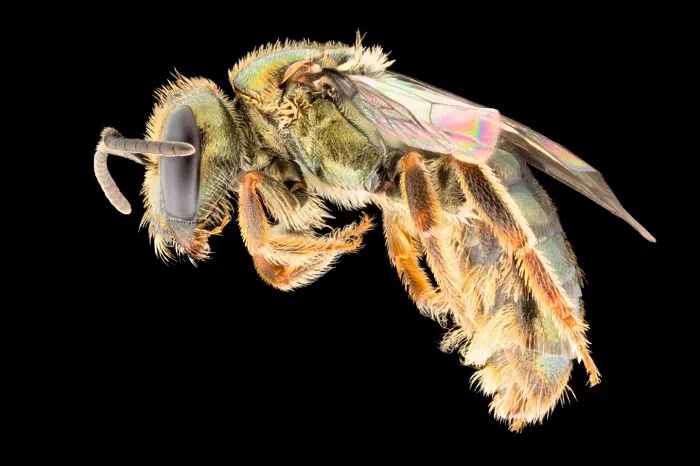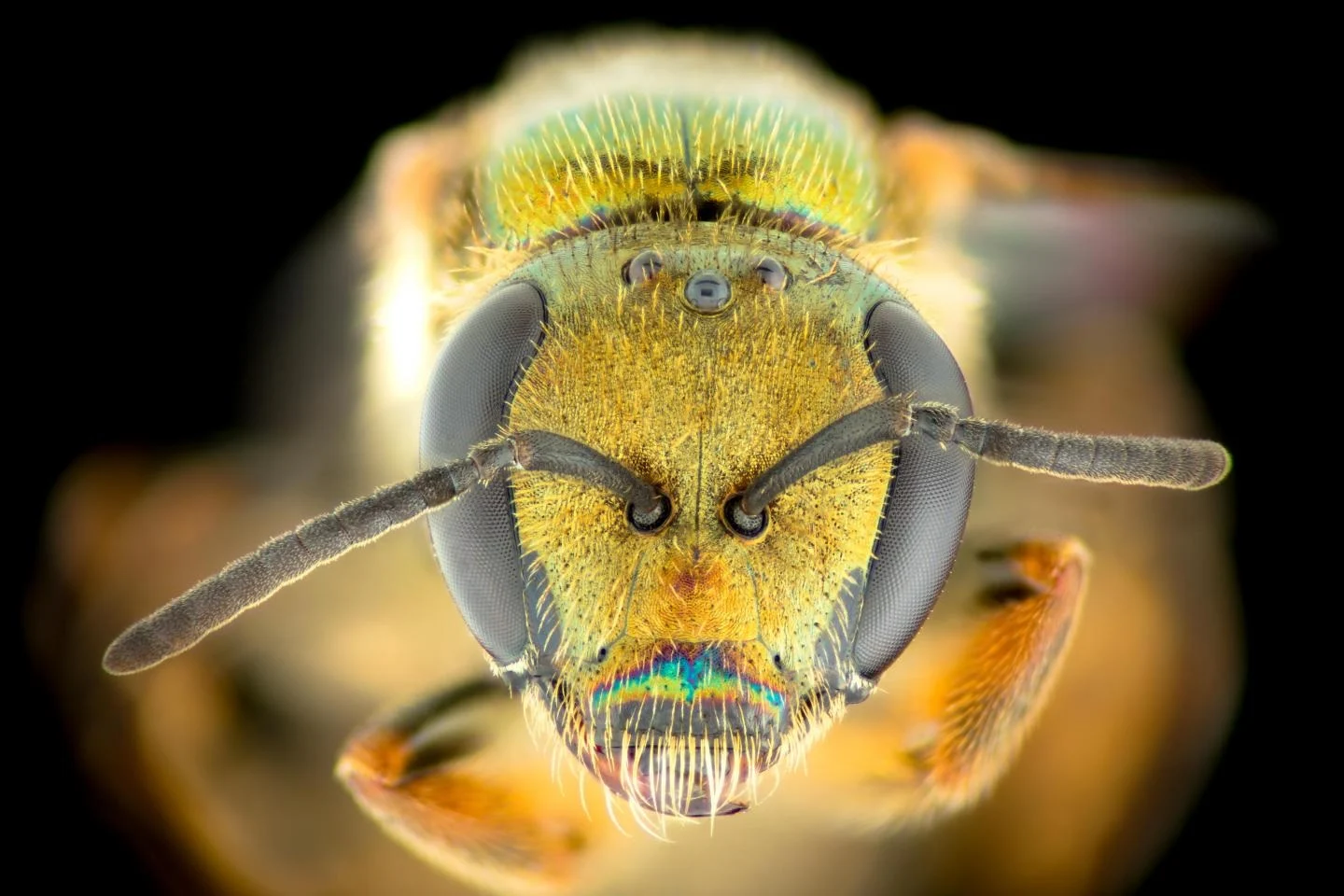
Meet the rainbow bee: An important plant pollinator influenced by human activity
A new study featurig the rainbow bee provides an example of how humans and insects have worked together to shape the modern world.
Meet the rainbow bee, a.k.a., Homalictus fijiensis, an important plant pollinator that's distributed throughout Southeast Asia, Indonesia, Australia, and the archipelagos of the Pacific Ocean.
Noted for their striking colours, rainbow bees play an important role in maintaining local ecosystems by distributing pollen and helping plants grow.
Now, a new paper suggests their presence in several areas may be due to human intervention, and that the modern world may have looked very different if humans hadn't moved into their habitat.

A closeup of Homalictus fijiensi. (James Dorey/Flinders University)
Thousands of years ago, rainbow bees were confined to the lowlands of Fiji, but around 1000BC, humans ventured into their habitat and began clearing the land and introducing new plants and weeds into the area.
That appears to have helped them because rainbow bees like to nest in clear and open ground.
"Earlier research connected the relatively recent population expansion to warming climates, but our study reveals an interesting and positive response from an endemic species to human modifications to the landscape which commenced about 1000BC," lead author, Flinders University researcher James Dorey said in a statement.
"This species is a super-generalist pollinator (pollinates many plant species) ... one of the most important bee pollinators in Fiji actually appears to have benefited from human arrival and subsequent clearing of land in Fiji."
Dorey's team noted no corresponding change in bee populations on the island of Kaadu, where human activity is much lower.
They study's authors say the research shows how the impact of human interference can be inferred even when there are no fossil records. The conclusions were made following phylogenetic analyses of mitochondrial and genomic DNA of Fiji's native bee populations.

A closeup of a rainbow bee. (James Dorey/Flinders University)
This showed "that bee populations in Fiji expanded enormously, starting about 3000 years ago and accelerating from about 2000 years ago," researchers said in a statement.
The study also provides new insight into how today's world was shaped by the decisions of our ancestors.
"Early European explorers and naturalists were unaware that extensive human dispersals had already been transforming the ecologies of Pacific islands for millennia," SA Museum's research fellow in World Cultures, Dr. Stephen Zagala said.
"This study adds important details to an emerging picture of the Pacific as a highly cultivated landscape."
